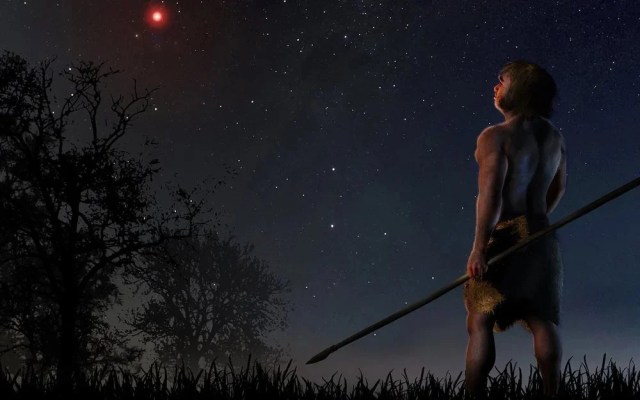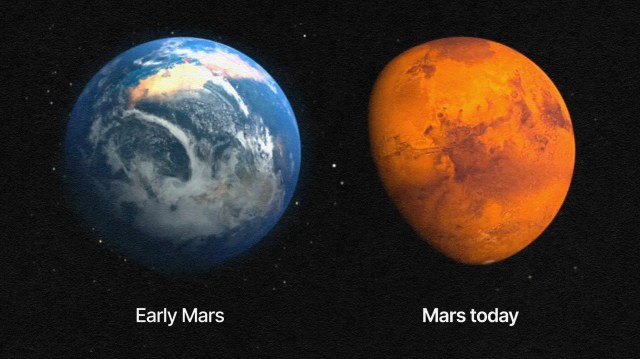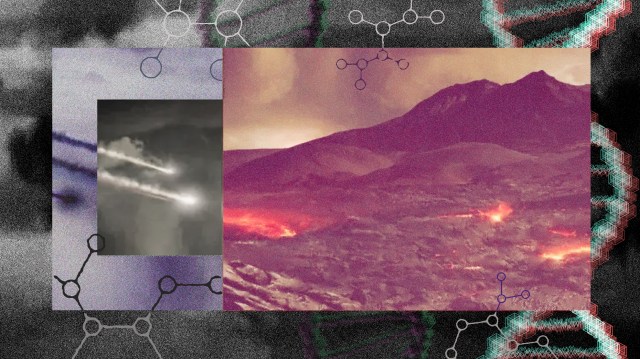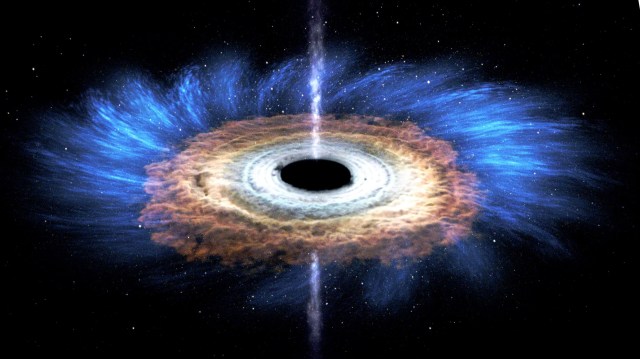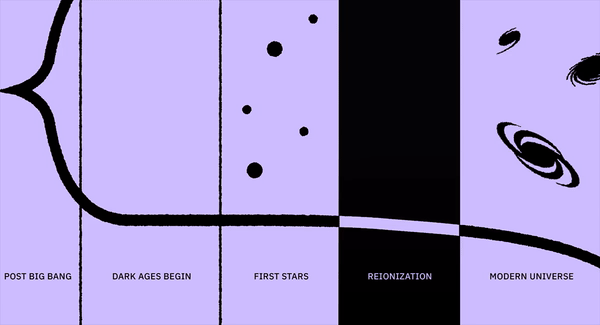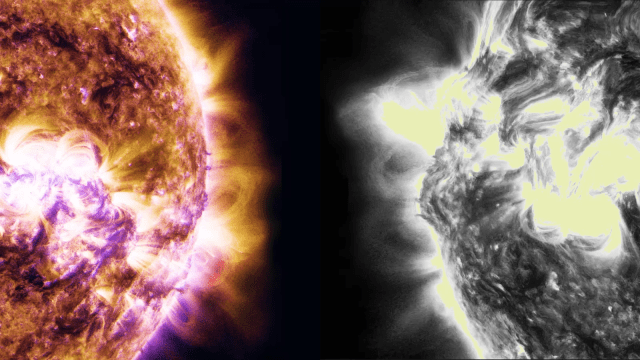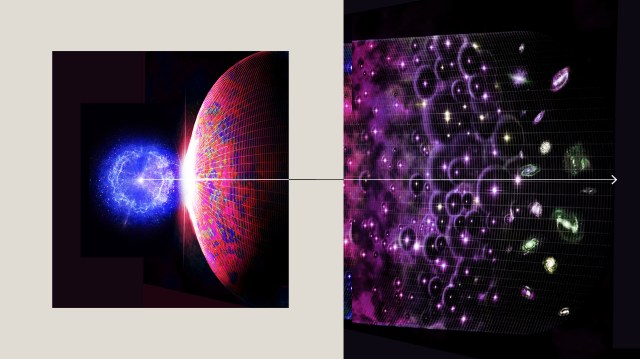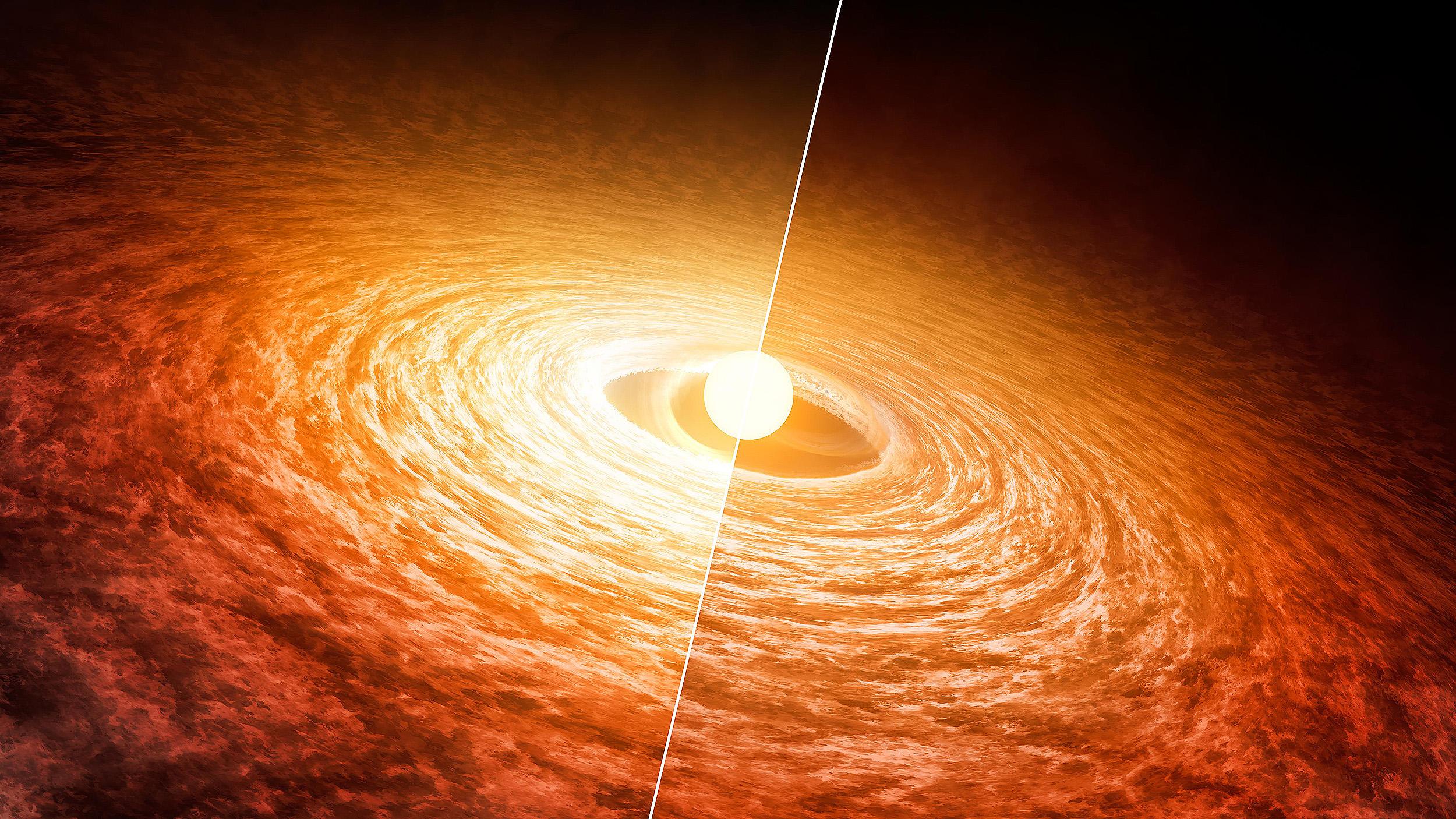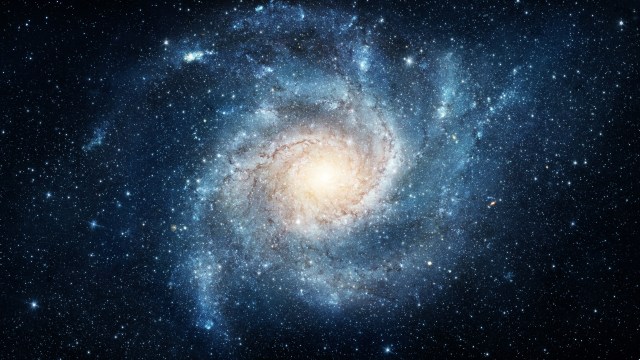What was it like when planet Earth first formed?

- When nuclear fusion ignited in the Sun’s core, Earth was only a gleam in the eye of an undifferentiated protoplanetary disk.
- The giant planets formed first, however, and any inner worlds created early on were destroyed: gravitationally ejected, swallowed by the Sun, or gobbled up by a larger planet.
- Not only did four inner, rocky worlds emerge, but potentially one or even two more: one of which collided with proto-Earth to form our modern planet-moon system. Things were oh so different back then.
A little over 4.5 billion years ago, the seeds for planet Earth were put in place, right as the earliest parts of our Solar System began to form. Somewhere in the Milky Way, a large cloud of gas collapsed, giving rise to thousands of new stars and star systems, each one unique from all the others. Some stars were much more massive than our Sun; most were much smaller and lower in mass. About half came with multiple stars in their systems; about half the stars formed all by their lonesome, like ours did. As these protostars collapsed and cooled, the temperatures and densities rose in their cores. After crossing the threshold for nuclear fusion to ignite, our parent star, the Sun, was officially “born” as a living star.
But these newborn stars weren’t alone. Around practically every one of them, a large amount of matter had coalesced into a disk. Known as protoplanetary disks, these would be the starting points for each and every one of the planets that would eventually, stably form around these stars. With the advances in telescope technology that’s accompanied the past few decades, we’ve started to image these disks and their details firsthand, and see what planet-formation looks like in even its earlier stages. Shortly after the birth of our Sun, a planetary system formed around it, eventually leading to the modern Solar System. For the very first time, we’re directly learning how planetary systems like our own came into existence.

In theory, the process of forming planets around newborn stars is incredibly straightforward. Whenever you have a large mass, like a gas cloud, you can expect the following steps to happen:
- the majority of the mass gets drawn into a central region,
- where one or more large clumps will grow into protostars,
- while the surrounding three-dimensional gas collapses,
- with one dimension collapsing first (creating a disk),
- and then imperfections in the disk grow,
- preferentially attracting matter and forming the seeds of planets,
- while energetic particles and winds from the newly formed star interact with that matter,
- eventually boiling and evaporating the volatile compounds that persist for a time away,
- leaving only a fully-formed set of planets, moons, and other objects behind.
Thanks to long-wavelength observations that can be very sensitive to details such as heated dust, we can now observe these protoplanetary disks directly. Remarkably, we are finding evidence that these planetary seeds — or imperfections in the protoplanetary disk — begin appearing from a very early time in a stellar system’s history: within about the first 2 million years of a protostar igniting to become a star. However, these protoplanetary disks won’t persist for long, as after only tens of millions of years, they’ll have been entirely evaporated away. What’s left behind, after that early material has been blown off, is what will eventually become a mature planetary system.

For our Solar System, long ago, the story is the same. Initially, there was only a primeval cloud of gas from which all the planets would have formed, composed of a mix of elements: mostly hydrogen (left over from the Big Bang), followed by helium (mostly remaining from the Big Bang, but partly formed from prior generations of stars), and all the heavier ones (all formed from prior generations of stars and stellar cataclysms), going up and up the periodic table. The closer you are to your newly-formed star, the easier it is for the lightest elements to be blown off and evaporated away. In short order, every young stellar system will develop three different regions:
- a central region, where only metals and minerals can condense into planets,
- an intermediate region, where rocky and giant worlds with carbon compounds can form,
- and an outer region, where volatile molecules such as water, ammonia, methane, and nitrogen can persist.
The border between the inner two regions is known as the Soot Line, where being interior to it will destroy the complex carbon compounds known as polycyclic aromatic hydrocarbons. Similarly, the border between the outer two regions is known as the Frost Line, where being interior to it will prevent you from forming stable, solid ices. (In fact, there are multiple Frost Lines: one for each species of volatile compound.) Both lines are driven by the heat coming from the star, and will migrate outward over time as the star heats up and evolves.
Interestingly enough, JWST has discovered what may be an unexpected third type of “line,” as the debris disk found around the nearby star Fomalhaut, a few hundred million years old, shows an asteroid belt analogue, a Kuiper belt analogue, and a third, intermediate belt as well: an unexpected but exciting find.

As the star continues to fuse light elements into heavier ones in its core, clumps form from imperfections in the protoplanetary disk. Over time, these protoplanetary clumps will grow by accreting additional matter from within their orbits, as well as drawing external matter in from slightly closer in and farther away within the disk. The more clumps are created and the closer they get to one another, the greater the opportunity they’ll have to gravitationally perturb one another. Over time, various clumps, known as protoplanetesimals, can:
- merge together and collide,
- gravitationally eject one other,
- or even hurl one or both objects into the Sun or into a larger protoplanet.
When we run simulations that allow planets to grow and evolve, we discover an extraordinarily chaotic history that’s unique for each and every planetary system that forms.
When it comes to our own Solar System, the cosmic story that unfolded was not only spectacular, it was in many ways unexpectedly violent: filled with many would-be planets that wound up getting destroyed by higher-mass bullies in their vicinity. In the inner part of our early Solar System, it’s very likely that we had a relatively large world present early on, which was possibly swallowed by our Sun in our cosmic youth. There is nothing preventing a giant world from forming in the inner Solar System; the fact that we have only the rocky worlds close to our Sun tells us that something else was likely present early on. The largest planets probably formed from massive seeds early on, and there may have been more than four of them. In order to get the present configuration of gas giants, the simulations we run seem to show that there was at least a fifth giant planet that was ejected at some point long ago. Meanwhile, Jupiter began closer to our Sun, clearing out any low-mass worlds that formed there early on, and migrated outward over time.
It was only millions of years later on, when there was much less primordial material left over from our Solar System’s initial formation, that the present inner, rocky worlds began to form. This late-time onset of their formation explains why the planets now found in our inner Solar System are so low in mass compared to the larger, outer, gas-rich planets we find.
The asteroid belt, between Mars and Jupiter, is very likely what remains of our initial Frost Line. The border between where you can have stable ices should have led to a large number of bodies that were a mix of ice and rock, where the ices on the surfaces of these bodies have mostly sublimated away over the billions of years that have passed, leading to the current rock-and-metal-rich composition of asteroids.
Meanwhile, out beyond our last gas giant, the leftover planetesimals from the Solar System’s earliest stages still persist today. Although they may merge together, collide, interact, and occasionally get hurled into the inner Solar System from gravitational slingshots, they largely remain out beyond Neptune, as a relic from the youngest stages of our Solar System. In many ways, these Kuiper belt and Oort cloud objects are the oldest, most pristine remnants from the birth of our cosmic corner of the Milky Way.

But the most interesting place of all, for our purposes, is the inner Solar System. Even though we have learned that high-mass planets are common occurrences in the inner portions of exoplanetary systems with Sun-like stars at their cores, they aren’t mandatory. The easiest scenarios for getting rid of any early, massive planets are to have it either get swallowed by the young Sun, or perhaps to have the innermost gas giants having been close to the inner regions early on, only to migrate outward later on. Either way, something delayed the formation of planets in the inner Solar System, allowing for the four worlds that did form — Mercury, Venus, Earth, and Mars — to be much smaller and lower in mass than the giant outer planets that formed.
From whatever elements were still left once the inner Solar System became able to stably form planets, and we know they were mostly heavy elements from the planetary density measurements we have today, the rocky planets of our Solar System arose. Each one has a core made of heavy metals, accompanied by a less-dense mantle made out of material that fell onto the core later, including volatiles that would have been boiled away had they not been anchored to a planet interior to the Frost Line. After only a few million years of this type of evolution and formation, the planets were similar in size and orbit to how they are today.

But there was a huge difference: in these early stages, Earth didn’t have our Moon. In fact, Mars didn’t have any of its moons, either. And there likely weren’t only four young planets, but six: one young planet that was the size of Mars but closer to Earth, named Theia, and one yet-unnamed planet that was closer to Mars and that may have been somewhat less massive than the red planet. Before Earth and Mars had moons, they were just like Venus and Mercury: isolated worlds that had only to worry about other massive objects either colliding with them or gravitationally perturbing them. It’s only in the aftermath of a large impact that either the Earth-Moon system or the system of moons around Mars would have arisen.
How could this have occurred? Via a giant impact of some type, where a large mass struck one of these early worlds, kicking up planetary debris, where some would fall back onto the parent planet, but some of that debris would eventually coalesce into one or more moons. For Earth, this was an idea that wasn’t taken particularly seriously until we went to the Moon and investigated the rocks we found on the lunar surface. Quite surprisingly, the Moon has the same stable isotope ratios that the Earth does, while they’re different between all the other planets of the Solar System. Additionally, the Earth’s spin and the Moon’s orbit around Earth have similar orientations, and the Moon has an iron core, all facts which point to a mutual common origin for the Earth and the Moon.

Originally, the theory for how this collision occurred was called the Giant Impact Hypothesis, and was theorized to have involved an early collision between proto-Earth and a Mars-sized world, called Theia. The Plutonian system, with its five moons, and the Martian system, with its two moons (that likely used to be three), all show similar astronomical evidence of having been created by giant impacts long ago.
But the Giant Impact Hypothesis, at least in its original form, has been shown to pose problems that are difficult to reconcile the actual data with. A better scenario now involves a smaller (but still very massive) impact, from an object with a significantly greater speed than just another planet in an adjacent orbit would possess, may have been responsible for the creation of our Moon. Instead of the original notion of a giant impact, a high-energy, high-speed collision with proto-Earth could have formed a debris disk around our world, creating a new type of puffy, torus-like structure around our planet known as a synestia. Meanwhile, the core of the impactor would make its way into Earth’s interior, where it could not only merge with Earth’s core, but perhaps even remain intact in the interior of the Earth, where geophysical evidence would reveal its presence to humans billions of years later.

There are four big properties of our Moon that any successful theory for its origin must explain:
- why there is only one large moon rather than multiple moons,
- why the isotope ratios for elements are so similar between the Earth and Moon,
- why the moderately volatile elements are depleted in the Moon
- and why the Moon is inclined as it is with respect to the Earth-Sun plane.
The isotope ratios are particularly interesting for the Giant Impact Hypothesis. The similar isotopic properties between the Earth and Moon suggest that the impactor (Theia) and Earth, if they were both large, had to be formed at the same radius from the Sun. This is possible, but models that form a Moon via that mechanism don’t give the right angular momentum properties. Similarly, grazing collisions with the right angular momentum give rise to different isotopic abundances than what we see.
That’s why the alternative, newer scenario — a synestia — is so appealing. If you have a fast, energetic collision between a smaller body that’s less massive and our proto-Earth, you’d form a large torus-shaped structure around the Earth. This structure, called a synestia, is made of vaporized material that originated from a mix of proto-Earth and the impacting object. Over time, these materials will mix, forming many mini-moons (called moonlets) in short order, which can stick together and gravitate, leading to the Moon we observe today. Meanwhile, the majority of the material in the synestia, particularly the inner part, will fall back to Earth. Rather than a single, contrived giant impact, we can now speak in terms of generalized structures and scenarios that give rise to large moons like our own, and note that something similar likely happened on Mars in the Solar System’s early stages, too.

There was almost certainly a high-energy collision with a foreign, out-of-orbit object that struck our young Earth in the early stages of the Solar System, and that collision was required to give rise to our Moon. But it was very likely less massive than Mars is today, and it was almost certainly a sturdy strike, rather than a glancing collision. Instead of a cloud of rock fragments, the structure that formed was a new type of extended, vaporized disk known as a synestia, which has quickly become the favored scenario for the formation of moons around rocky planets in general. Over time, that synestia settled down to form our Earth and Moon as we know them today, with the Moon initially being very close to Earth and very hot, having cooled and spiraled outward over time.
At the end of the early stages of our Solar System, conditions were as promising as they could be for life, with the raw ingredients of a rocky planet with a thin atmosphere located at the right distance for liquid water to stably exist on its surface. With water emitted from volcanic activity from Earth’s interior, as well as brought to our planet extraterrestrially during the heavy bombardment period in our Solar System’s early history, there was every reason to think of a young, barren Earth as potentially habitable. With a central star, three atmosphere-rich rocky worlds (including Venus and Mars), the raw elements needed for life, and with gas giants only existing much further beyond, all the pieces were in place for life to arise. We know we got lucky for humans to arise. But with this new understanding, we also think the possibility for life like us has happened millions or even billions of times elsewhere, all throughout the Milky Way.


